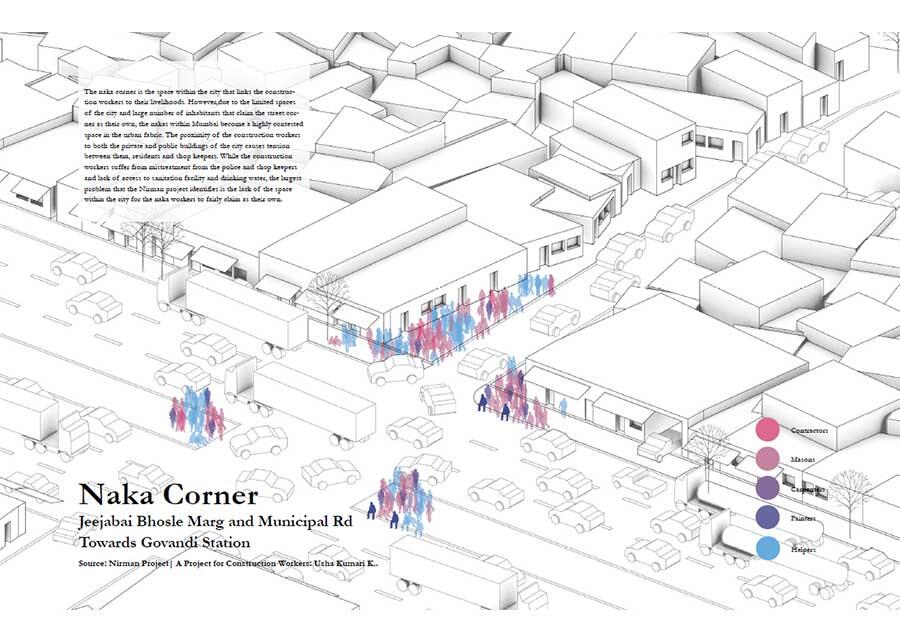
Instructor: Rahul Mehrotra and Martha Chen. Teaching Assistant: Nupoor Monani
Course: Livelihoods and Urban Form: Mumbai in a Comparative Perspective
Students: Mary Kate Cahill, Mazyar Kahali, Namik Mackic
The emergence and growth of Mumbai as urban agglomeration have been fundamentally shaped by what throughout the last four centuries have been its dominant economies. Indeed, the very morphology of the present-day unitary peninsular landform is a product of a series of land reclamations aimed at fitting the natural harbor to the function of a major colonial outpost. Thus, when William Hornby, the Governor of Bombay, undertook the first Hornby Vellard causeway project in 1782–1784, it was expressly to put an end to the formation of swamps as the sea penetrated into the low-lying land between the original seven islands of Mumbai. A diachronic reading, however, may recognize this engineering enterprise as belonging to the same genealogy of technomanagerial practice that is at work globally in the contemporary neoliberal city: strategies of institutional power by which natural landscapes are intervened in, heavily modified, and appropriated first and foremost with the objective to maximize the economic capacity of space in the ongoing urbanization of capital.
This re-reading of the agency behind Mumbai’s foundational intervention is offered as a clue to the duplicitous biopolitics of unregulated labor in the emerging ‘world-class city.’ Capital has not only been the aggregator of the landmass of present-day Mumbai; the evolutionary sequence of its vehicular economies (trade/commerce – industrial manufacturing – real estate) has multiplied the city’s demographics, emphatically stratified its social composition, and continues to restructure its urban geographies in the interest of accumulation.
Understanding the full implications of this observation has been crucial in reformulating the analytical framework by which we distinguish the object of our study: the livelihoods and working conditions of informal construction workers in contemporary Mumbai as key links in the value chain of real estate. Not only are the present-day power wielders in the city’s construction industry and real estate business to a large extent direct descendants in a line of capital accumulation that dates back to the maritime trade under the 18th century East India Company (Appadurai 2000) – a fact that attaches social and ethnic markers to the domestic capital behind construction in Mumbai. The actual enforcement of policy frameworks, too, tends to be warped by the intransigent imperative of profit making, with bribery serving as the calculated relaxer of a purposely, unfeasibly strict code. The norm of regulation-bending across the sectors make sthe distinction between the formal and the informal economy, we have come to learn, inoperative. The reality of the state itself acting as an ‘informalized entity’, as proposed by Ananya Roy (2009), and elaborated by Arjun Appadurai (2000) and Mattias Echanove (2013) with specific reference to urban planning, the operations of the real estate and construction industry, and the speculative instrumentalization of the so-called informal settlements and their population, have come to encapsulate a notion of elastic legality which pre-conditions all law enforcement and renders future policy recommendations hopeful at best.


